
views
- Armor class (AC) is a value that measures a character’s defenses, including the strength of their protective gear and their ability to avoid attacks.
- Determine an unarmored character’s AC by adding 10 + their Dexterity modifier.
- When a character wears armor, base AC increases depending on its strength. Light, medium, and heavy armor have different formulas to calculate AC.
What is armor class (AC) in D&D 5e?

Armor class (AC) is a number representing a character’s defenses. In D&D 5e, armor class is determined by a few different factors: a character’s protective gear, natural defenses, and ability to move fast or avoid attacks. The higher a character’s AC, the better their defenses are—and, in turn, the harder they are to hit in a battle. For example, a paladin might not be able to move very fast, but they might have a high armor class because their sturdy armor allows them to withstand hard-hitting attacks. On the other hand, a slippery rogue might not wear a ton of protective gear, but they could make up for it by being extremely fast and skilled at avoiding attacks. In D&D 5e, most player characters (PCs) typically have an AC somewhere between 10 and 20 (at least to begin with). Higher numbers are the best ACs, and any AC over 20 is considered superb.
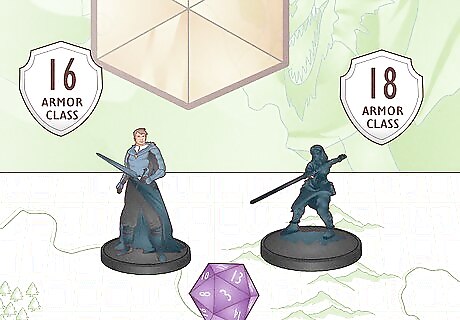
PCs take damage in combat from attacks stronger than their AC. During fights in D&D 5e, combatants must make attack rolls to see if their weapon attacks ultimately hit or miss. When the sum of an attack roll is lower than a target’s AC, that attack misses. When the attack roll amounts to a target’s AC or exceeds it, the attack hits—and the target takes damage from the strike. Say you were playing a ranger (AC 17) fighting a wraith (AC 13). If you shot an arrow at the wraith, and your attack roll (d20 + attack modifier) was a 15, your attack was higher than the wraith’s armor class, so it would hit. If the wraith tried to use its Life Drain ability on you and rolled a 16 to attack, that’s less than your character’s armor class. Therefore, the attack would miss.
How to Determine Unarmored AC
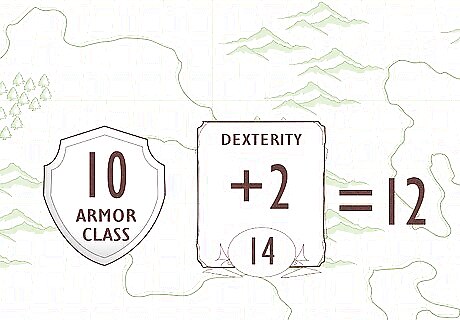
Add 10 to your character’s Dexterity (DEX) modifier to calculate AC. When a character isn’t wearing any armor at all, the formula to determine their armor class is very simple: 10 + DEX modifier. Dexterity is the ability score that measures agility, which is why a character’s DEX modifier plays a big role in determining their armor class. For example, say you were playing an unarmored druid with a DEX score of 14 (+2 modifier). That means their AC would be 10 + 2 for a total of 12. The 10 is a default value representing the effectiveness of a character’s protective gear. All characters who don’t wear armor begin with a base armor class of 10 + their DEX modifier. As armor and other protective gear are equipped, that value changes. The more protective gear a character has, the higher their base AC becomes.

Check to see if your character also has a natural armor bonus. Natural armor bonuses reflect a character’s innate defenses. If your character has a natural armor bonus, it’s because their race has physical features that can be used for protection. With natural armor, the formula to calculate unarmored AC isn’t 10 + DEX modifier; the 10 increases depending on the character. For example: Lizardfolk: The formula is 13 + DEX modifier. Tortle: Base AC 17 (There’s no DEX bonus since a tortle’s shell makes it difficult to be agile). Warforged: The formula is 10 + 1 + DEX modifier (They get a permanent +1 bonus to AC). Keep in mind that natural armor and regular armor don't stack. You either get a natural armor bonus while unarmored or use the AC bonus from a suit of armor.
How to Determine AC with Armor & Shields
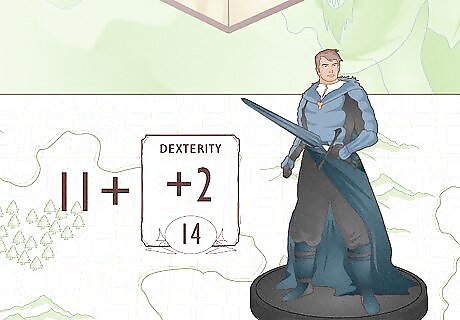
Light armor grants a slight boost to a character’s base AC. Light armor might give your character the smallest AC bonus, but it’s also the easiest for your character to move around in. Thus, you can still add your character’s DEX modifier to their base AC, no matter how high that modifier is. Just remember that the formula is slightly different depending on the type of light armor you have. Padded armor: 11 + DEX modifier Leather armor: 11 + DEX modifier Studded Leather: 12 + DEX modifier

Medium armor gives characters a moderate increase to AC. If you upgrade to medium armor, the process of calculating AC also changes. Essentially, the heavier armor is, the harder it is for your character to move around in it—so, while medium armor isn’t totally inflexible, you can only use +2 from your DEX modifier (assuming you have at least a +2). If your modifier is lower, just add it as usual. Medium armor includes: Hide: 12 + DEX modifier (max 2) Chain Shirt: 13 + DEX modifier (max 2) Scale Mail: 14 + DEX modifier (max 2) Breastplate: 14 + DEX modifier (max 2) Half Plate: 15 + DEX modifier (max 2) Generally, the trade-off for wearing medium armor is that you get a higher base AC but can’t apply as much of your DEX modifier to that score.
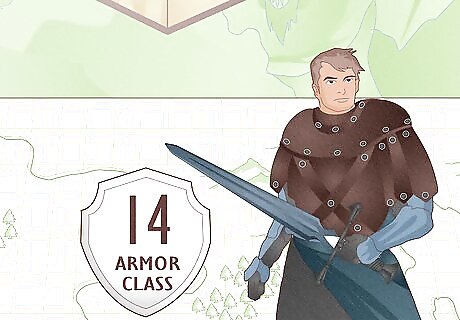
Heavy armor offers the largest AC boost but may impact movement. The formula for calculating AC changes again when you equip heavy armor. Since it’s the heaviest armor in the game, it doesn’t offer a lot of flexibility for characters; therefore, you can’t add a DEX modifier to your AC when wearing it. So, with heavy armor, the AC score comes from the armor itself—no addition is necessary. Heavy armor includes: Ring Mail: AC 14 Chain Mail: AC 16 Splint: AC 17 Plate: AC 18 As you can tell from the values here, hide and ring mail aren’t ideal armor choices; studded leather is better than hide, while breastplate and half plate are better than ring mail.
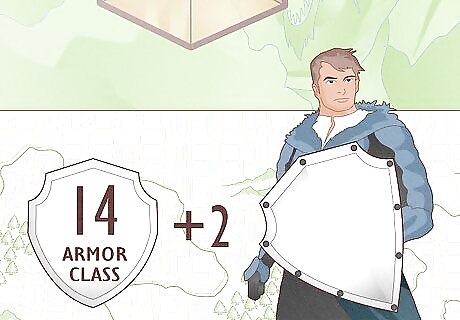
Shields add +2 to your armor class (unless otherwise noted). When your character has a shield equipped in a hand that isn’t holding a weapon, they get another bonus to their armor class, which stacks on top of other armor and class bonuses. Just like armor, magical shields may grant larger bonuses, but the base AC bonus for a shield is typically +2.
AC for Monks & Barbarians

Barbarians and monks have a class feature called Unarmored Defense. Having Unarmored Defense means that both classes can add an additional modifier to their base AC; for barbarians, it’s Constitution (CON), and for monks, it’s Wisdom (WIS). However, they can only do that as long as they’re not wearing armor. Therefore, the formula for calculating AC would be: Monk: 10 + DEX modifier + WIS modifier Barbarian: 10 + DEX modifier + CON modifier So, if you were playing an unarmored monk with a DEX of 18 (+4 modifier) and a WIS of 15 (+2 modifier), your AC would be 10 + 4 + 2, for a total of 16. With this feature, wearing armor isn’t often necessary for monks and barbarians. Ultimately, it’s up to you (the player) if you’d rather have an armor bonus or an Unarmored Defense bonus.
How to Increase AC in D&D 5e
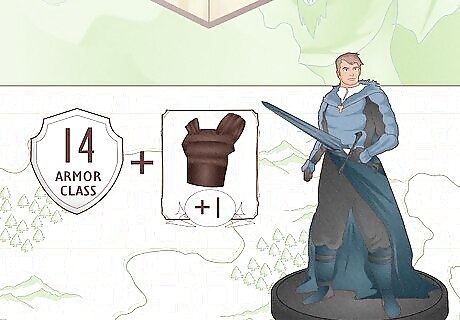
Upgrade to magical armor with a higher AC bonus. The armor values above are standard for nonmagical armor—but magical armor can do even better! Look for armor with +1, +2, or +3 in the name; not all magical armor sets grant an AC boost, but those that do will always say so either in the name or the armor’s description. For example, if your character finds studded leather armor +1, that means the armor is magical and grants a +1 bonus to AC when worn. Generally, armor with a +1 bonus is considered rare. Armor with a +2 bonus is very rare, and armor with a +3 bonus is legendary. The rarer an item is, the more expensive it is—and the harder it is to find. Armor with a +1 bonus isn’t too hard to buy or find in D&D 5e, whereas +3 armor is extremely difficult to find and often costs thousands of gold pieces.
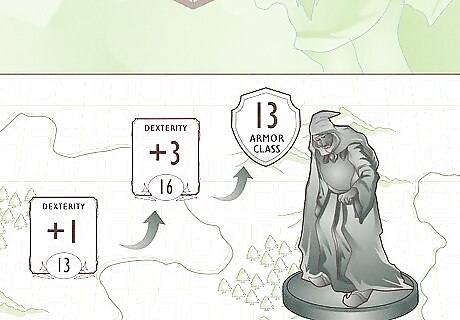
Raise your character’s DEX score to improve their AC. Since a character’s Dexterity (DEX) modifier is tied to their AC score, boosting their modifier can raise their AC. Use ability score improvements when leveling up to improve your character’s Dexterity! Remember that this isn’t effective if you wear heavy armor (or medium armor and have a DEX modifier greater than +2) since both armors limit a character’s DEX. If your character wears light armor, has natural armor, or doesn’t wear armor, raising their DEX score is a great way to boost their AC! For example, say you play a sorcerer with no armor and a DEX score of 13 (+1 modifier). If you raised their DEX to a 16 (+3 modifier) over time, their AC would go from an 11 to a 13.
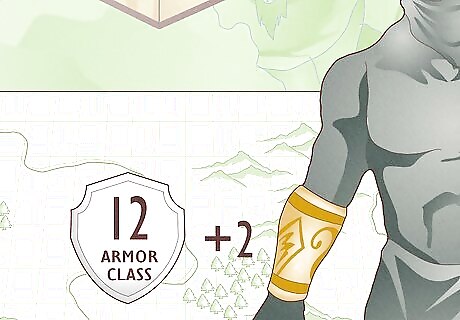
Equip magic items designed to boost a character’s AC. Armor isn’t the only way to improve AC; other magic items are scattered throughout the game that can also give your character a leg up! Keep an eye out for magic items that either offer direct improvement to AC or can improve your character’s AC by raising their DEX score. For example: Bracers of Defense: Grants a +2 to AC as long as the character isn’t wearing armor Ring of Protection: Grants a +1 to AC (no matter what) Cloak of Protection: Grants a +1 bonus to AC Manual of Quickness of Action: Grants a permanent +2 increase to DEX
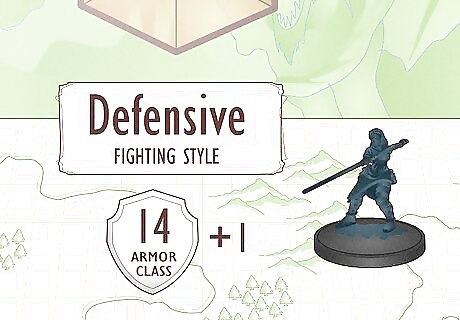
Take the defensive fighting style if you play a martial class. Martial classes are classes in D&D whose primary actions in combat involve weapon attacks, including fighters, paladins, monks, rogues, rangers, and barbarians. Most martial classes get to choose their fighting style early on, and each fighting style has a different perk. Choosing the “defensive” fighting style grants a +1 bonus to AC. Keep in mind that this fighting style only grants a bonus when the character is wearing armor. Even if you don’t play a fighter, you can still get this fighting style! Take the Fighting Initiate feat when leveling up to get access to it.
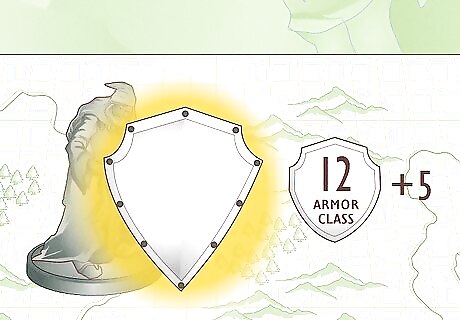
Cast spells designed to raise your character’s AC briefly. If your character is a spellcaster, they may have access to spells that can give them a quick AC improvement—especially when a hard-hitting enemy is nearby. Keep an eye out for spells that can boost AC, and make sure your character learns them if you want to have a little insurance for a tough battle. Spells include: Shield (Level 1): Caster has a +5 bonus to AC until the start of its next turn. Mage Armor (Level 1): Target’s base AC becomes 13 + its DEX modifier for 8 hours. Shield of Faith (Level 1): Target gets a +2 bonus to AC for up to 10 minutes. Barkskin (Level 2): Target’s AC can’t be less than 16 for up to 1 hour. Haste (Level 3): Target gains a +2 bonus to AC, advantage on DEX saves, an extra action, and speed is doubled.
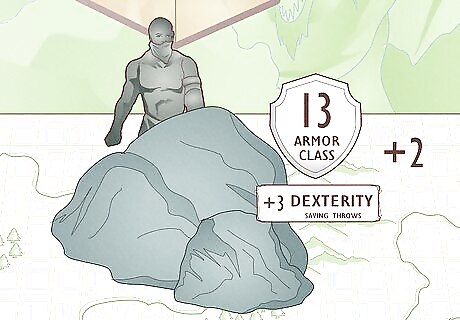
Use partial or total cover in a battle for a temporary AC boost. This is one of the easiest ways to get a higher AC bonus, yet not many players remember to use it! When a character moves behind an object or barrier that grants them cover from an enemy’s attacks, they naturally become harder to hit—and thus, their AC increases for as long as they’re using cover. Half Cover: Grants a +2 bonus to AC and DEX saving throws. Half cover applies if an obstacle blocks at least half of the character’s body. Three-Quarters Cover: Grants a +5 bonus to AC and DEX saving throws. Three-quarters cover applies if an obstacle blocks at least three-quarters of the character’s body. Total Cover: The character can’t be targeted directly with an attack or spell (so, while it doesn’t technically give an AC bonus, it does make you very tough to hit!) This only applies if a creature is completely obscured.
Using AC as a DM
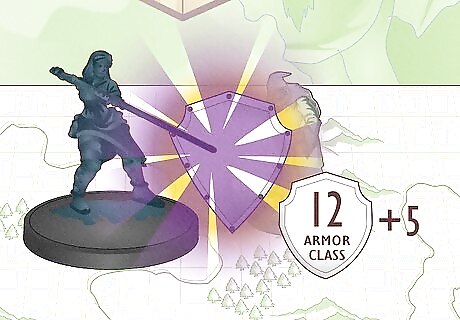
Try flavoring battle scenes based on a character’s AC and roll results. “Armor class” may just be a numerical value, but you can use it as a DM to create some pretty dramatic moments! What happens when an enemy lands a powerful hit against a PC or a PC narrowly misses one of their attacks? Instead of just telling the group the result of a roll, you could narrate what happened in detail. For example: Say an enemy is about to land a hit on the party’s injured wizard. Then, the wizard uses their reaction to cast Shield and give their AC a +5 boost. As a result, the enemy misses their attack. That’s a big moment—so narrate it! Say something like, “The devil’s blade streaks toward your friend, ready to cut them in two…then, at the last second, a brilliant magical shield flares to life! The blade is knocked out of the devil’s hand.”














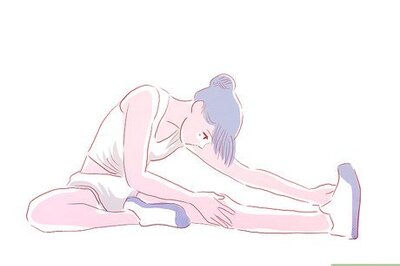



Comments
0 comment